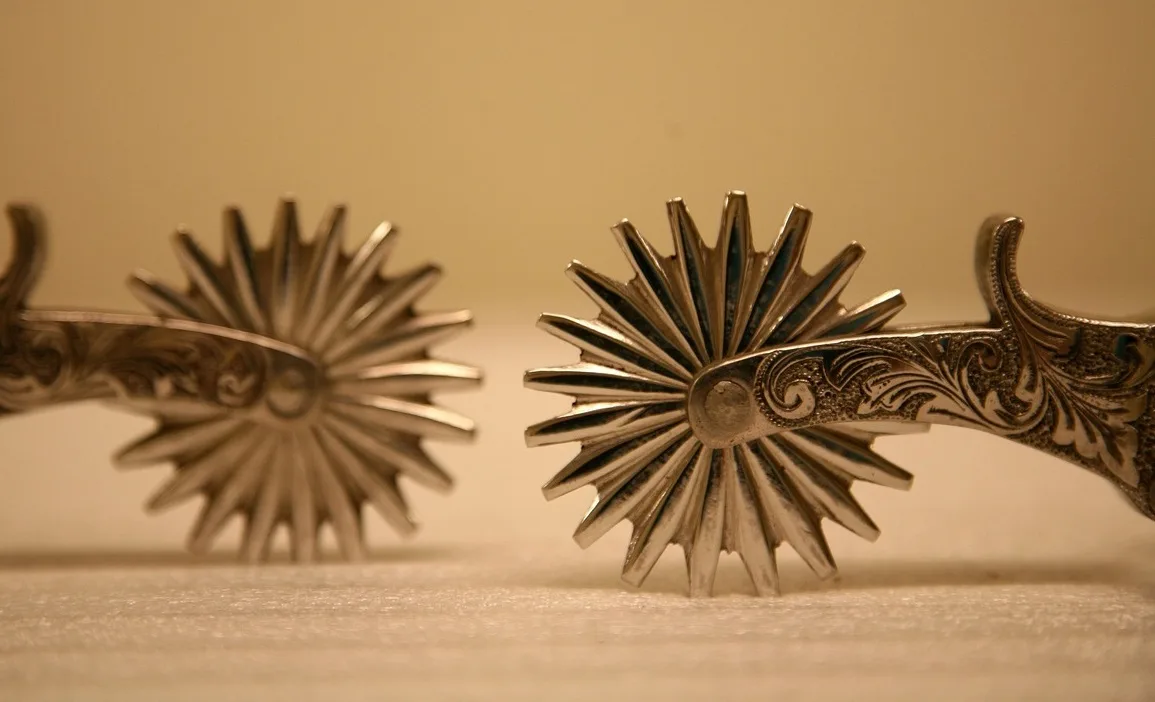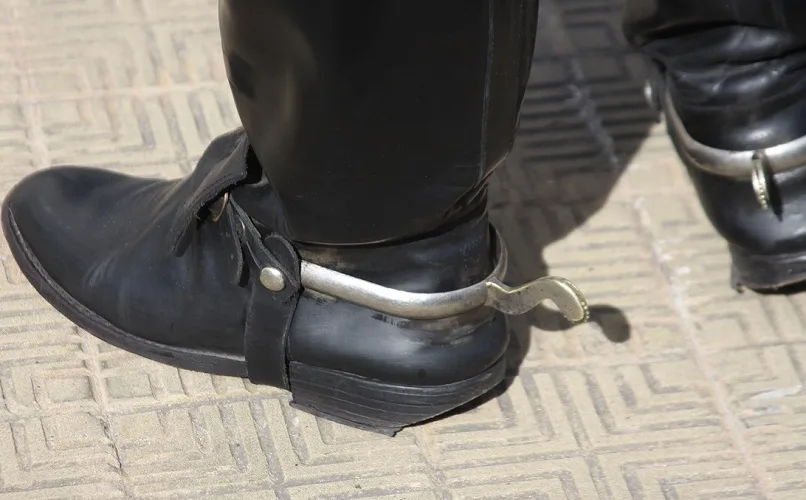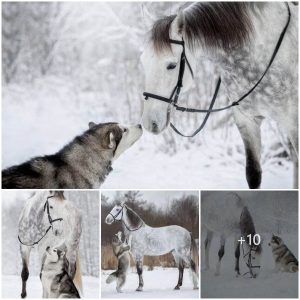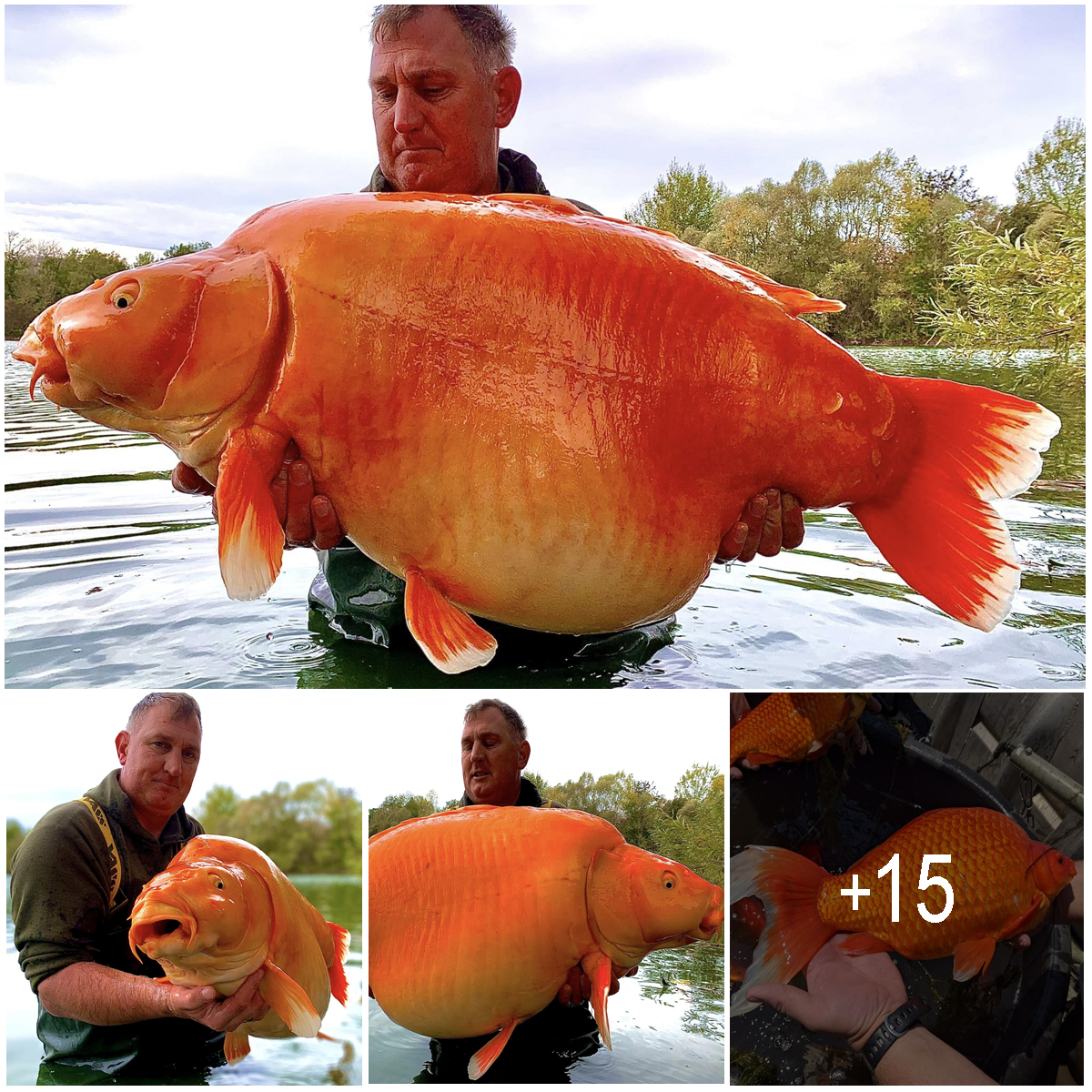![Why Cowboy Boots Have Spurs? [Detailed Horse Guide]](https://amazingsportsusa.com/wp-content/uploads/2023/10/Why-Cowboy-Boots-Have-Spurs.png)
Whether you are an equestrian or not, you’ve likely seen horse riders wear spurs. While they can appear intimidating, they can be a beneficial aid for certain horses.
The use of spurs goes all the way back to the 5th century BCE. Celts and ancient Romans used spurs during battle to steer their horses, leaving their hands free to fight. Medieval knights would wear gilded or silver spurs as a symbol of Knighthood.
Spurs have a long history in the equestrian world. The Spanish first introduced spurs and horses to America. Spurs soon became an essential component of a cowboy’s getup.
Today, spurs are still used by equestrians in both English and Western disciplines. There are rules and regulations over what spurs can be worn in competition to ensure the welfare of horses.
What are Spurs?
Spurs are a piece of riding equipment that attaches to the back of a pair of boots at the heel. Spurs are typically made from metal and generally attach to riding boots using leather straps.
Spurs come in a variety of different sizes and shapes. Some spurs, particularly Western spurs, will feature intricate designs and decorations.

There are three main parts to a spur: the yoke, neck, and rowel. The yoke, also known as the heel band, slides around the heel of the boot. The neck attaches the rowels to the yoke and the rowels are the contact point of the spur to the horse.
Why Are Spurs Worn on Cowboy and Riding Boots?
Spurs are worn on cowboy and riding boots as a leg aid to allow the rider to further communicate with their horse. Spurs are used to urge a horse forward, increase pace, and even guide movement, such as moving to the side.
A good rider will use gentle pressure when using spurs on their horse. Spurs are not intended to be used harshly on a horse but rather as an enhanced aid. They should never be used to punish a horse for misbehaving.
Spurs are used in both English and Western riding disciplines. They are used in support of leg, voice, and hand commands while riding.
Spurs are also worn by some cowboys as a traditional fashion accessory without being used on horses.

Are Spurs Legal?
The legality of spurs varies from country to country. In some countries, spurs are illegal to use on horses. In other countries, spurs are legal, but there are restrictions on how they can be used.
Do Spurs Hurt a Horse?
If used correctly, spurs will not harm or hurt a horse. However, in the wrong hands (or should we say feet) spurs can do more harm than good.
Spurs are designed to allow a rider to communicate with a horse. They are not intended to harm the horse in any way when they are used correctly.

Improper spur usage can potentially cause pain and lasting discomfort as well as psychological damage to a horse. Years of improper spur use may lead to a horse becoming sensitive to contact with the barrel or even may lead the horse to ignore leg aids.
Spurs should only be used by experienced riders. Beginner riders often do not have enough leg control to correctly use spurs. This could lead to accidentally jabbing the horse, which could result in the horse taking off in return.
Did Cowboys Really Wear Spurs?
Yes, cowboys did really wear spurs. They were originally adopted from Spanish vaqueros in the 16th century. Spurs were used to urge horses forward, control their direction, and punish them. They were also seen as a status symbol.
Spurs were typically made of metal with a rowel, a small wheel with sharp points. When the cowboy pressed down on the rowel, it would dig into the horse’s flank, causing it to move forward. The rowel could also be used to control the horse’s direction.
Spurs are still seen as a symbol of the cowboy lifestyle, but they are not as common as they once were. Many cowboys now prefer to use milder methods of controlling their horses.
Should I Use Spurs When I Ride?
Only riders with experience should use spurs. However, not every horse needs to be ridden with spurs.
Spurs can be beneficial for horses who need to “get up and go a little better” or horses who can benefit from the enhanced communication that comes from spurs.
When riding with spurs, you should not use them at all times but rather only when your horse needs the additional communication spurs provide after applying other aids.
Typically, sensitive and high-energy horses do not need to be ridden with spurs but some advanced riders may still find them beneficial to use. Some horses simply do not like spurs and will not respond well to them.
It is always best to consult with your trainer first before deciding to wear spurs or not. They can help you determine if you are ready to use spurs and if it will be beneficial to your horse for you to wear spurs.
Depending on the organization and discipline you are competing in, there may be rules regulating what type of spurs can be used. For example, the USEF only allows spurs with a smooth inside arm, which must be English-style, and cannot have rowels with sharp points for dressage competitions.
Be sure to always check to breed and/or organization rules regarding spurs before competing.

What are the Different Types of Spurs?
Spurs are used widely in both English and Western disciplines. They are divided into men, women, and children sizes. In addition, they are also categorized by length as well.
Rowel spurs are found in both English and Western disciplines, however, most English disciplines do not permit the use of the use of rowels with sharp points. Western spurs typically have longer shanks and larger rowels when compared to English spurs.

Common Types of Western Spurs
- Cloverleaf: Cloverleaf spurs have blunt-edged rowels that resemble a cloverleaf. The shank is relatively short and they are considered a mild spur.
- Reiner-Style: Reiner-style spurs have a 10-point rowel but ate slightly longer and narrower than the roper-style rowel. They have a longer shank with an upward curve and are a popular choice among reiners.
- Roper-Style: Roper-style spurs have a short shank and a 10-point small diameter rowel. They are a popular choice among ropers and trail riders.
- Nine-Point Star: Nine-point star spurs have a large-diameter rowel that has nine narrow points. Since they offer more bite they should only be used by trainers, non-pros, and experienced amateurs with strong leg control.
- Rock Grinder: Rock grinder spurs feature sharp-pointed rowels and longer shanks with a slightly raised neck. Due to their design, rock grinder spurs should only be used by professional trainers.
Common Types of English Spurs
- Prince of Wales: Prince of Wales is a common type of spur that has a flat but blunt end.
- Swan Neck: Swan Neck spurs have a longer neck that slightly curves upward before leveling off. They are a popular choice for dressage riders.
- Waterford: Waterford spurs have a large round ball at the end. The neck length can vary but it is often on the shorter side.
- Round End: Round end spurs have a small rounded ball at the end. They are a milder spur that is popular in many disciplines.
- Knob End: With knob end spurs, the end of the spur is squared off but has blunt edges. They are commonly found in English and Western disciplines.
- Roller: Roller spurs can be divided into three sections: disc, ball, and teeth. Disc spurs have a small rowel-like rolling disc without teeth and are popular for dressage. Ball spurs have a plastic ball at the end that rolls, they are a very mild spur. Teeth spurs have a blunt-toothed wheel that rolls and typically has eight teeth.





